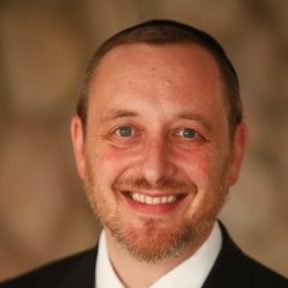Purim 2025: The Final Edition

We look to Queen Esther’s tefillos for guidance on how to deal with current events

T
he parallels between the Purim story and modern times are uncanny and astonishing. As Rav Moshe Shapira would often say, using his powerful language of metaphor, “The festival of Purim was the mehudara kamma, the ‘first edition’ of Haman, the source of all that is evil. We’re living in the mehudara basra, the final edition. The tree ascending fifty amos is in his courtyard, waiting to hang Mordechai, the source of all that is good. He’s ready to destroy, slay, and exterminate all the Jews, young and old, infants and women, in one day.”
Rav Moshe asked, “What does Hashem want from us? Why doesn’t He just bring the Geulah? Year after year, the only constant is the worsening of our situation. Are we getting any better? Doesn’t He see that waiting for us to change (as a people) isn’t happening?”
The only thing we see with clarity is how current events are imitating the Purim story. Ha’olam mechaleh es atzmo, the world is hurtling full speed into self-destruction.
Rav Moshe’s biggest fear was that people like us would fall into a sense of apathy and slumber. In the words of Haman, “yeshno am echad, we’re a nation asleep” (Megillah 13b). We could get used to a decadent and immoral society, with families falling apart, and a deep, fake world exacerbating the anxiety of a generation grappling with substance abuse, who spend much of their life hiding behind screens. We could exchange a world of true beauty for one where music, art, speech, and clothing are devoid of any refinement, with heimishe kids asking, “Rebbi, what’s wrong with a tattoo?”
Perhaps worst of all, he was afraid of a world where Bnei Yishmael joins hands with Bnei Eisav. Anti-Semitism would be the new normal. And bizarrely, after centuries of learning the hard way, frum Yidden would still clutch on to the straws of presidents and armies.
We’re All Esther
So what should we do?
Esther showed us the way. She told Mordechai, “Lech knos es kol hayehudim, gather the Jews together.” This is the first time in history that we see communal prayer. It’s also a call for Jewish unity; we need to be there for each other, more than ever, lovingly and unconditionally.
Most of all, we need to become Esther.
(Note: In order to appreciate the events described in Megillas Esther, it’s crucial to understand that every reference to “the Melech — the king,” that is, King Achashveirosh — conceals a reference to the King of Kings, HaKadosh Baruch Hu. The story of Purim can thus be read on two levels. When read literally, King Achashveirosh is the central controlling player. When read at a deeper level, the King of Kings is manipulating the people involved like puppets on a string.)
When Esther entered the palace of Achashveirosh for the weighty purpose of saving Klal Yisrael, she had no invitation and was therefore risking her life. In her own words, “Uvechen, avo el hamelech asher lo chadas, veka’asher avadeti, avadeti — And so, I will come to the king, which is against the law, and if I perish, I will perish” (Esther 4:16).
On a deeper level, Esther entered the palace of the King of Kings to save Klal Yisrael with the power of tefillah. But she had “no invitation.” In other words, as the representative of Klal Yisrael, Esther didn’t have enough merits to be saved (see Sifsei Chayim, chelek alef, page 247).
Parenthetically, every Rosh Hashanah and Yom Kippur, we enter the palace of the King of Kings and ask to be inscribed in the Book of Life. It’s a taste of the Purim story. As we begin our prayers in the Shemoneh Esreh of the Yamim Noraim, our opening word is “u’vechein” — and so. Avudraham teaches us that the word u’vechein is inserted to invoke the “u’vechein” said by Esther before she entered the palace (Avudraham, seder tefillas Rosh Hashanah). On the High Holidays, when the question, “Who will live and who will die?” hovers over us, we once again become Esther. We all don’t have enough merits to be saved, and have no choice but to follow in Esther’s footsteps and ask for salvation.
Esther Turns to the King
Esther fully understood the consequence of entering the palace without an invitation: It was a guaranteed death sentence. For the king to revoke a law that he himself had formulated was inconceivable. Why would he make a mockery of himself in front of his whole royal court?
Yet there was always the chance that Hashem would perform a miracle, like He did for Daniel when he was cast into the lion’s den, or for Chananyah, Mishael, and Azariah when they were thrown into the fiery furnace.
This thought gave her little comfort. Even if she miraculously survived entering the palace, and even if she escaped Haman’s decree, she would still be condemned to misery. As an orphan, the only person Esther had in her life was Mordechai, the great tzaddik of the generation, her husband, and mentor. By willfully submitting herself to the king, she would be halachically forbidden to Mordechai. She would then have to live the rest of her days with the wicked King Achashveirosh.
Furthermore, she’d spent her whole life perfecting the middah of modesty. Her name, Esther, means hidden. Tzniyus was her very essence. It was through this middah that she had attained the status of one of Klal Yisrael’s seven prophetesses. And now she would be perpetually condemned to live with a man who was notorious for perversion and obsessed with immodesty.
Her life was in tatters.
But there was one thing that no one could take away from her. Even as she was about to enter the valley of death, she knew that Hashem would always be with her. Hashem would be her Rock to lean on. Esther girded herself with her power of prophecy — the Shechinah, the Divine Presence, would accompany her to Achashveirosh’s court. The extreme closeness to Hashem that only prophecy can bring would carry her through her ordeal.
She was on her third day of fasting. She removed her sackcloth and ashes and donned royal clothing — perhaps her beautiful attire would help hide her gaunt features after not having eaten for so long. She set out for the royal palace, comforted that the Shechinah was escorting her, with constant prayer on her lips.
As she approached the courtyard of the palace, she focused all her energies on her tefillos. Her fate, and the fate of every man, woman, and child in Klal Yisrael, and the fate of all of Jewish history, was on her shoulders. Her big moment had arrived.
She entered the palace.
Disaster struck. For Esther, no greater catastrophe could possibly have occurred. The Shechinah, unsuited to remain inside an impure palace filled with idols, left her.
Suddenly she felt totally alone. There she was, a frail and fragile woman, who had never enjoyed parents or children, with no friends to support her, utterly alone in the most hostile environment on earth, at the most critical moment in her life. And in her moment of greatest need, Hashem had abandoned her.
At that moment Esther became every Jew throughout the ages who has ever felt abandoned by Hashem — every older single watching her classmates making bar mitzvahs, every childless couple watching parents dancing with their children on Simchas Torah, every parent dealing with a sick child, every spouse too ashamed to share their shalom bayis problems.
Esther had a choice; she could turn around and flee.
Instead, Esther makes a choice that would change the course of history. She may have felt abandoned by Hashem, but she wouldn’t give up on Him.
“Keili, Keili, lama azavtani? My G-d, my G-d! Why have You forsaken me?” (Tehillim 22:2) She cried and she davened, and she davened and she cried, until her whole body became an ocean of tefillah and tears.
What was she to do now? Her voice was too choked with emotion to speak, her eyes too filled with tears to see, and her body too weak from fasting to move.
But she had made her choice. She had to move forward toward the king.
Slowly, she inched her way through the seven antechambers that led to the hall of the king. Although she felt her strength waning, she channeled every ounce of remaining energy into tefillah.
She davened like she’d never davened before. She begged Hashem to see the afflictions of her soul and the suffering of her people. She invoked every zechus that she had. She implored Hashem to remember the merit of her family, her ancestors, the Avos, all the tzaddikim of all the generations and all of Klal Yisrael. Little by little, step by step, she made her way to the hall of the king.
She entered the hall. She looked up and found herself standing directly opposite the king.
Esther knew that she cut a pathetic figure at that moment. All her beauty had vanished with the trauma of her ordeal. She was a wretched Jewish girl who had just defied the most powerful person in the world.
The king was sitting on his throne of judgment. The magnificent hall was filled with courtiers and advisors, aristocrats and nobles — as well as soldiers and the king’s executioners. Haman and his henchmen were there, too. Everyone gasped with shock at the audacity of Esther’s entry. How dare she enter the palace uninvited? Everyone knew the royal decree — Esther now had to be put to death. The hall fell silent as everyone waited for the king’s reaction.
The king was fuming with rage. He gnashed his teeth, his eyes burning like fiery torches. His wrath was terrifying; there was no question what his intentions were. Haman savored the moment. He was waiting for a nod from the king so that he could unleash his henchmen, who were straining to slay Esther.
Esther lowered her eyes. She was inwardly shaking and her heart was racing. She had to do something. She wanted to move, to speak, to just raise her head, but she couldn’t. She completely froze. After all her fasting, prayers, and tears, her strength had finally left her.
It was all over.
And then the most extraordinary thing happened. Her head lifted up, but without any effort on Esther’s part. Her face was suddenly transformed into its full radiance and beauty. Her eyes and the eyes of the king met. He was overwhelmed by Esther’s charm and grace. He looked at his hand and was surprised to find that he was holding his golden scepter, something he’d never before held while seated on the throne of judgment. Then, to the absolute amazement of everyone present, the scepter miraculously started growing and reaching toward Esther. The scepter stretched to the other side of the hall, touched Esther, and then stopped.
The king arose from his throne of judgment, his face filled with lovingkindness. He ran toward Esther and supported her frail body. “My dear Queen Esther, why did you go to all this trouble and endanger your life? But have no fear. My laws apply to my people, not to my beloved queen. What is your request? I am prepared to grant you even half of my kingdom.”
And the King of Kings arose from His Throne of Judgment, and He was filled with the attribute of mercy, as if He were saying, “This is the moment of extreme closeness that I’ve been waiting for. Know that as you struggled toward Me, at your moments of greatest darkness, I was with you all the time. But I remained hidden, because I wanted your efforts to be yours. My precious Klal Yisrael, arise from your praying and fasting, your sackcloth and ashes! Wipe away your tears!”
The moment of Geulah has arrived….
Letter to a Blessedly Busy Mother
When it comes to Purim, which I’m told is an eis ratzon for tefillah, my usual davening schedule doesn’t seem to work. Mishloach manos and the seudah consume every minute. What am I supposed to do?
A Blessedly Busy Mother
Dear Blessedly Busy Mother,
Welcome to the wondrous world of Purim. You’re wise to embrace the balagan of mishloach manos and seudah, which are the mitzvos of the day. That is your avodas hayom! But you should chapp arein (carpe diem, if you prefer Latin) at the auspicious tefillah opportunity the day has to offer. Siddur Rav Amram Gaon relates that in the days of the geonim, their yeshivos made Purim a day of tefillos and they would say the full Tachanun. That’s not how we pasken.
However, halachah does say that on Purim one should give money to “anyone who stretches out his hand.” (O:C 694:3) Both the baalei mussar and sifrei chassidus infer that since Hashem, kiveyachol, keeps mitzvos, it follows that anyone who stretches out his hand asking Hashem for yeshuos on Purim will be answered (see, for example, Pri Tzaddik, Purim).
More to the point, Purim is a time when Hashem answered our tefillos. On the level of derush (see, for example, Nesivos Shalom, Purim, pg. 78), Achashveirosh, representing Hashem, tells Esther at the feast of wine, “mah sh’eilasaych v’yinasen lach — what is your request and it will be granted” [Esther 6:5]. If we can ask Hashem for half His kingdom, we can certainly ask Him to get our daughter into the right seminary!
So how can a busy woman on one of her busiest days of the year take advantage of this?
First step, which is good for the whole year round, is to think carefully as to what are your true needs. What is heavy on your heart? What do you need to share with the King? Perhaps loved ones are unwell or are suffering emotionally. Perhaps you know those with difficulty finding a shidduch, or who are having difficulty having children or difficulty raising them. Write them down on a piece of paper and wherever possible use their Hebrew names. Remember that for rachamim we use the mother’s name. Make sure the lists aren’t overwhelming or else it will backfire. Kavanah is the key.
Then remember that you’re part of Klal Yisrael. This may need a second list. You’re human and understandably you may feel less stress for the needs of our people. Nevertheless, try your best to find place in your heart to ask with all your strength, for example, for the protection of our soldiers, return of our hostages, and most importantly, that Hashem should send a ruach memarom to help all of Klal Yisrael do a teshuvah sheleimah.
The next step is stealing a few minutes in your day for some privacy. This could include Purim evening as well. Perhaps your husband can cover for you. If you have time to daven a Shemoneh Esreh, then take out your lists just before the last yehi ratzon. If not, then say a few perakim of Tehillim and then read your lists. It’s okay to make your requests in English. Looking for an appropriate perek? Tehillim Chapter 22, the perek said by Esther as she entered the palace, fits the bill.
Keep in mind that Taanis Esther isn’t just the calm before the storm. It represents the tefillos of Esther and Klal Yisrael that brought the yeshuos. This is the perfect time to focus on your second list.
May you be zocheh to see miracles for your loved ones and for all of Klal Yisrael.
Rav Menachem Nissel is the author of Rigshei Lev: Women and Tefillah (Feldheim 2024) and Looking into the Sun: The Torah, Life & Legacy of Rav Moshe Shapira (Feldheim 2024). He is a maggid shiur in Yeshivas Yishrei Lev, teaches in seminaries in Jerusalem, and is the Senior Educator for NCSY. The above is adapted from a chapter in Rigshei Lev that explains how tefillah works and why women are the natural daveners. It concludes with an understanding why the final Geulah must come through women’s prayer.
(Originally featured in Family First, Issue 935)
Oops! We could not locate your form.





